Thingiverse

Lenticular Moon/Mars Base Dome by FablabMoebius
by Thingiverse
Last crawled date: 3 years ago
https://www.youtube.com/watch?v=FY-GGBmdz-c
This base concept has three building phases :
1) On the moon
2) On the way to Mars
3) On mars
Phase 1 : Moon
The base is build on the moon in craters. We use craters to gather rare minerals coming from meteorites & compression + heat from the impact. These valuable minerals are sold on earth to reduce the cost of the base. The base is checked and tested on the moon first.
During this phase, Helium 3 (see: http://fti.neep.wisc.edu/gallery/pdf/wisengr1111.pdf) can be harvested and stored for later usage (Trip to mars or on mars).
Phase 2 : Trip to Mars
The base can be extracted from the moon's dust, the dome is returned and the base can be attached to the central axe of a mothership propelled by a Q-Thruster (see: https://www.youtube.com/watch?v=9M8yht_ofHc ). Rotation will bring artificial gravity during the trip to Mars.
Phase 3 : Mars
Robots have digged mars's soil during the trip. The base can be installed on its arrival. Craters will be chosen to procure more shielding from mars frequent dust winds/storms.
THE BASE
The dome
The base is build around a central axe (light well) fixed to a lenticular dome.
The lenticular shape is used for several purposes :
the shape gives less resistance to wind and dust wind.
it allows big surfaces for artificial gravity during the trip and big surface for solar panels on mars.
the shape can absorb more energy on micro-meteorites impact (see http://www.universetoday.com/12864/building-a-base-on-the-moon-part-3-structural-design/).
The dome will be made of a self-healing concrete that can absorb high energy impacts (see: http://www.youtube.com/watch?v=IJc8Xyk3w9o , http://www.bbc.com/news/uk-england-somerset-22773704 or http://www.shimz.co.jp/english/theme/dream/moonbase.html). The dome will be used for hydroponic cultures & cultures (plants need lot of surface to grow). A garden area will be used in part for cleaning atmosphere and O2 production, and in part for the pleasure & free time of the... martians ;).
The dome ceiling will be filled with high power leds to reproduce natural light (see http://www.leds.de/en/High-Power-LEDs/). This is SkyLED (Not Skynet ! ;) ). Some special LEDs with specific wavelength will be used to accelarate plant's growth.
Quadcopters robots will change the leds of SKYLED.
An iris door will seal the dome from the rest of the base in case of an integrity breach.
The lower levels are composed of:
2 working rings (around the central axe),
1 habitat ring (around the central axe),
1 ring for machinery & Generators (around central axe to distribute power),
1 food reserve & supplies storage (separate),
1 water decontamination/filtration & recycling (separate).
Working Ring
The working area will be similar to the ISS, supporting work, experiences & research. 3D printers with a special alloy, fully recyclable, will print all the mechanical parts and tools needed during the missions. This will save a lot of weight for the trip to mars and will grant flexibility by building the best tool for the right job when needed. MPL printers (see: http://www.rapidprototypingmachine.com/mpl/ and https://www.youtube.com/watch?v=xZHTMHXr_6Q ) could also print completely functional objects with even more flexibility. Quadcopter drones will assure small transport (less than 2kg) in the base due to their low energy consumption and ease of maintenance (see: http://www.ted.com/talks/andreas_raptopoulos_no_roads_there_s_a_drone_for_that). On Mars possible strong quadcopter drones/robots (like: http://www.gameofdrones.biz but in kevlar or carbon nanotubes) could scout and work outside the base.
Habitat ring
The habitat ring is installed deep underground to shield people from cosmic radiations and benefit from natural geothermal heat. This ring is smaller because we spend less time in this area during the day.
Machinery & Generators
Energy production will be made here. It is protected deep underground as energy is vital to support life. Energy could come from several sources :
Solar panels from outside the dome
Geothermal energy
Wind farm on top of crater rim
Hydrogen Fuelcell (this could be useful as it produces water as byproduct and can now be stored safely in high volumes, see : http://www.mcphy.com/en/products/solid-hydrogen-storage/ , http://www.scientificamerican.com/article/gassing-up-with-hydrogen/ and http://www.scientificamerican.com/article/is-2014-the-year-of-the-fuel-cell-car/)
Helium 3 reactor is also a possibility. It could be harvested during phase 1 on the moon for later usage. Big advantages are no high-energy neutron, non radioactive byproducts and potentially bigger yield than fission (see http://fti.neep.wisc.edu/gallery/pdf/wisengr1111.pdf).
This ring will also support air recycling and conditioning.
If you made it here, you've read the whole concept ! Thank you for reading ! Hope you've enjoyed this flawed concept (but dream is always the beginning of a new reality right ?) ;)
[UPDATE:] Printable separate parts are coming soon.
[UPDATE 06/06/14:] You can print the separate parts of the base & assemble them. The base on mars will be next.
[UDATE 06/08/14:] You can print the complete model. If I have time i'll try to do... the mothership too !
[UDATE 06/11/14:] Fixed holes in mars-ground.stl and mars-ground-optimised.stl. They are now completely manifold.
PS : If i won, the replicator 2 will be given to a fablab i'm starting in my community (http://www.fablab-moebius.org).
This base concept has three building phases :
1) On the moon
2) On the way to Mars
3) On mars
Phase 1 : Moon
The base is build on the moon in craters. We use craters to gather rare minerals coming from meteorites & compression + heat from the impact. These valuable minerals are sold on earth to reduce the cost of the base. The base is checked and tested on the moon first.
During this phase, Helium 3 (see: http://fti.neep.wisc.edu/gallery/pdf/wisengr1111.pdf) can be harvested and stored for later usage (Trip to mars or on mars).
Phase 2 : Trip to Mars
The base can be extracted from the moon's dust, the dome is returned and the base can be attached to the central axe of a mothership propelled by a Q-Thruster (see: https://www.youtube.com/watch?v=9M8yht_ofHc ). Rotation will bring artificial gravity during the trip to Mars.
Phase 3 : Mars
Robots have digged mars's soil during the trip. The base can be installed on its arrival. Craters will be chosen to procure more shielding from mars frequent dust winds/storms.
THE BASE
The dome
The base is build around a central axe (light well) fixed to a lenticular dome.
The lenticular shape is used for several purposes :
the shape gives less resistance to wind and dust wind.
it allows big surfaces for artificial gravity during the trip and big surface for solar panels on mars.
the shape can absorb more energy on micro-meteorites impact (see http://www.universetoday.com/12864/building-a-base-on-the-moon-part-3-structural-design/).
The dome will be made of a self-healing concrete that can absorb high energy impacts (see: http://www.youtube.com/watch?v=IJc8Xyk3w9o , http://www.bbc.com/news/uk-england-somerset-22773704 or http://www.shimz.co.jp/english/theme/dream/moonbase.html). The dome will be used for hydroponic cultures & cultures (plants need lot of surface to grow). A garden area will be used in part for cleaning atmosphere and O2 production, and in part for the pleasure & free time of the... martians ;).
The dome ceiling will be filled with high power leds to reproduce natural light (see http://www.leds.de/en/High-Power-LEDs/). This is SkyLED (Not Skynet ! ;) ). Some special LEDs with specific wavelength will be used to accelarate plant's growth.
Quadcopters robots will change the leds of SKYLED.
An iris door will seal the dome from the rest of the base in case of an integrity breach.
The lower levels are composed of:
2 working rings (around the central axe),
1 habitat ring (around the central axe),
1 ring for machinery & Generators (around central axe to distribute power),
1 food reserve & supplies storage (separate),
1 water decontamination/filtration & recycling (separate).
Working Ring
The working area will be similar to the ISS, supporting work, experiences & research. 3D printers with a special alloy, fully recyclable, will print all the mechanical parts and tools needed during the missions. This will save a lot of weight for the trip to mars and will grant flexibility by building the best tool for the right job when needed. MPL printers (see: http://www.rapidprototypingmachine.com/mpl/ and https://www.youtube.com/watch?v=xZHTMHXr_6Q ) could also print completely functional objects with even more flexibility. Quadcopter drones will assure small transport (less than 2kg) in the base due to their low energy consumption and ease of maintenance (see: http://www.ted.com/talks/andreas_raptopoulos_no_roads_there_s_a_drone_for_that). On Mars possible strong quadcopter drones/robots (like: http://www.gameofdrones.biz but in kevlar or carbon nanotubes) could scout and work outside the base.
Habitat ring
The habitat ring is installed deep underground to shield people from cosmic radiations and benefit from natural geothermal heat. This ring is smaller because we spend less time in this area during the day.
Machinery & Generators
Energy production will be made here. It is protected deep underground as energy is vital to support life. Energy could come from several sources :
Solar panels from outside the dome
Geothermal energy
Wind farm on top of crater rim
Hydrogen Fuelcell (this could be useful as it produces water as byproduct and can now be stored safely in high volumes, see : http://www.mcphy.com/en/products/solid-hydrogen-storage/ , http://www.scientificamerican.com/article/gassing-up-with-hydrogen/ and http://www.scientificamerican.com/article/is-2014-the-year-of-the-fuel-cell-car/)
Helium 3 reactor is also a possibility. It could be harvested during phase 1 on the moon for later usage. Big advantages are no high-energy neutron, non radioactive byproducts and potentially bigger yield than fission (see http://fti.neep.wisc.edu/gallery/pdf/wisengr1111.pdf).
This ring will also support air recycling and conditioning.
If you made it here, you've read the whole concept ! Thank you for reading ! Hope you've enjoyed this flawed concept (but dream is always the beginning of a new reality right ?) ;)
[UPDATE:] Printable separate parts are coming soon.
[UPDATE 06/06/14:] You can print the separate parts of the base & assemble them. The base on mars will be next.
[UDATE 06/08/14:] You can print the complete model. If I have time i'll try to do... the mothership too !
[UDATE 06/11/14:] Fixed holes in mars-ground.stl and mars-ground-optimised.stl. They are now completely manifold.
PS : If i won, the replicator 2 will be given to a fablab i'm starting in my community (http://www.fablab-moebius.org).
Similar models
3dwarehouse
free

Moon Dome
...how impractical this design is since any break in the dome would be a disaster. #base #central_tower #crater #dome #habitat #moon
thingiverse
free

NASA 3DP-Habitat Contest - Phase 2 Level 3, Dome by LivingLand
... a head-to-head contest in august 2017.
see https://www.nasa.gov/directorates/spacetech/centennial_challenges/3dphab/index.html
cg_trader
$8

Mars Dome Moon Dome Greenhouse 3D model
...mars dome moon dome greenhouse 3d model
cg trader
a mars/moon habitat dome suitable for sci-fi projects and renders,
thingiverse
free

Mars Habitat by msflosen
...ars (or moon) habitat inspired by marsha (https://www.aispacefactory.com/)
can be printed as a single piece without any supports.
3dwarehouse
free

Crater habitat
...n moon of callisto. a rough sketch of what things look like and what neighborhood is where. #eclipsephase #rpg #habitat #callisto
3dwarehouse
free

Lunar home away from home - WIP
...lunar home away from home - wip
3dwarehouse
just something i'm playing with. #moon #colony #habitat #crater
cg_trader
$5

Moon crater ring | 3D
...ng | 3d
cg trader
3d print model moon crater ring ring jewelry moon crater, available in obj, stl, ready for 3d animation and ot
thingiverse
free

UEM MARS LAB-UNIVERSIDAD EUROPEA MADRID & NAOTECH by rlagioia
...els will cover an area of 7 meters long and 14 meters wide. this surface is fully mobile to produce the maximum amount of energy.
thingiverse
free

Mars Solar Hive by raiou
...of the habitat when ever new resources become available and the dome superstructure could double as a crane to help build higher.
cg_trader
$17

Sci Fi Habitat City
...ity city building city scene future city futuristic building futuristic city mars base mars surface moon base moon surface sci fi
Fablabmoebius
thingiverse
free

Headphones stand by FablabMoebius
...headphones stand that looks like... well... headphones so you can easily answer to the difficult question : what is it made for ?
thingiverse
free

Parkside Drill Press part by FablabMoebius
...parkside drill press part by fablabmoebius
thingiverse
parkside drill press cache support part.
thingiverse
free

M3 hex nut knob by FablabMoebius
...m3 hex nut knob by fablabmoebius
thingiverse
all is in the title : a m3 hex nut knob !
thingiverse
free

Half of crater by FablabMoebius
... participation :http://www.thingiverse.com/thing:350120
i've been asked to post this for other projects. have fun with it !
thingiverse
free

Fast Mask Strap by FablabMoebius
... fablabmoebius
thingiverse
3d printable mask strap. the large shape reduces the pression on the back of the head of thin straps.
thingiverse
free

Bracelet loom by FablabMoebius
...s.
this tool is for kids aged 5 or later...
you'll need colourful rubber bands of around 1 to 1.5cm in diameter.
have fun !
thingiverse
free

Harry Potter's Deathly Hallows (spinning) by FablabMoebius
...39;s deathly hallows (spinning) by fablabmoebius
thingiverse
with the correct size and that spins !https://vine.co/v/ejltzwix7hp
thingiverse
free

Standard Filament Spooler Stand by FablabMoebius
...giverse
this is a spool coaster for standard filament spools (10 cm wide).
it requires m5 screws and washers + 608zz bearings.
thingiverse
free

XCarve Dust Shoe by FablabMoebius
...ve designed for our fablab. it work extremely well as you can see here : http://www.fablab-moebius.org/2017/x-carve-a-aspiration/
thingiverse
free

Filament Spooler coaster for Printbot Spools by FablabMoebius
...verse
this is a spool coaster for printrbot filament spools (7.5 cm wide).
it requires m5 screws and washers + 608zz bearings.
Lenticular
3d_export
$10

belt grinder-belt sander
...and old coatings. on the sharpener, they mainly make "lenticularquot; concave descents on a knife, although if you put...
thingiverse
free

Lenticular Card by gsyan
...ard generator from this repository :
https://github.com/gsyan888/lenticularcard
video:https://www.youtube.com/watch?v=pberhwveajk
thingiverse
free

Lenticular Cross Stitch Board by BeefyFetus
...nt with the large flat side down on the bed, and that's about it. might need to resize it to get it to fit on your print bed.
thingiverse
free

Lenticular Postage Stamp Bhutan holder by tpfaff100
...t that i put two photos up showing how wonderful lenticular stamps look on display. ok go get'em... no more excuses.
cheers.
thingiverse
free

Lenticular Clean Dirty Sign by TheFisherOne
...r in the text sections with a marker.
i mistakenly included the wrong pictures in a previous post, here are the correct pictures.
thingiverse
free

Lenticular 4 word xmas ornament by TheFisherOne
...that you need to pick short words, maybe 5 letters or less. you might have to adjust the height of the tree to match the letters.
thingiverse
free

Lenticular Dishwasher Clean/Dirty Sign (Customizable) by acdawg
...ut out for clean and dirty for those with 3+ extruders/mmu.
video: https://youtu.be/0rumcvpu-a4
inspired by http://bit.ly/2xsdekv
thingiverse
free

2016 Ghostbusters Reboot Pack center squeezer GB16 by Spongeface
...the large spherical lens, so when instead with the lenticular. i did print the top tow pieces in glow-in-the...
thingiverse
free

Deck of Many Animated Things Card Case by Unserfamily
...reference information on the back. contents: 23 tarot sized lenticular cards + rules booklet • vizier • sun •...
Dome
archibase_planet
free

Dome
...dome
archibase planet
dome
dome n261107 - 3d model (*.gsm+*.3ds) for interior 3d visualization.
3d_ocean
$4

geodesic dome
...geodesic dome
3docean
dome geodesic
geodesic dome with 3 holes
3d_ocean
$5

event dome
...event dome
3docean
dome event spotlight truss
event dome complete with truss and spotlights.
turbosquid
$60

dome
...squid
royalty free 3d model dome for download as obj and fbx on turbosquid: 3d models for games, architecture, videos. (1670366)
3ddd
$1

moooi / domes
...moooi / domes
3ddd
domes , moooi
светильники moooi_domes
turbosquid
$99

dome
... available on turbo squid, the world's leading provider of digital 3d models for visualization, films, television, and games.
archive3d
free

Dome 3D Model
...e onion-shaped dome
dome church n311012 - 3d model (*.gsm+*.3ds) for exterior 3d visualization.
archive3d
free

Dome 3D Model
...dome 3d model
archive3d
dome arbor
archive3d
free

Dome 3D Model
...me 3d model
archive3d
dome
dome n261107 - 3d model (*.gsm+*.3ds) for interior 3d visualization.
design_connected
$18

Dome Light
...dome light
designconnected
moooi dome light pendant lights computer generated 3d model. designed by jameelah el-gahsjgari.
Mars
3d_ocean
$10

Mars
...tar stars system universal way world
this is the mars with atmosphere. the textures file including 4 maps. thank you for looking.
turbosquid
$2

MARS
...
turbosquid
royalty free 3d model mars for download as blend on turbosquid: 3d models for games, architecture, videos. (1170651)
3ddd
free

ClassiCon Mars
...classicon mars
3ddd
classicon , mars
стул mars от classicon.
3ds max 2011 + fbx. vray.
turbosquid
$12
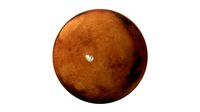
Mars
...id
royalty free 3d model mars for download as blend and gltf on turbosquid: 3d models for games, architecture, videos. (1659040)
turbosquid
$1

the mars
...oyalty free 3d model the mars for download as blend and blend on turbosquid: 3d models for games, architecture, videos. (1704346)
turbosquid
free

mars
...squid
royalty free 3d model mars for download as max and obj on turbosquid: 3d models for games, architecture, videos. (1355198)
turbosquid
$59

Mars
...
royalty free 3d model mars for download as max, obj, and fbx on turbosquid: 3d models for games, architecture, videos. (1259238)
turbosquid
$12

Mars
...lty free 3d model mars for download as 3ds, max, obj, and fbx on turbosquid: 3d models for games, architecture, videos. (1152228)
turbosquid
$5

Mars
...y free 3d model mars for download as obj, fbx, blend, and dae on turbosquid: 3d models for games, architecture, videos. (1292956)
3d_export
free

mars landscape
...mars landscape
3dexport
mars landscape made with word machine.
Moon
3d_export
$10
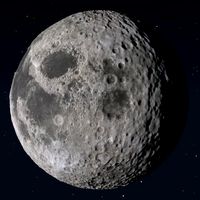
moon
...moon
3dexport
relief moon
3ddd
$1
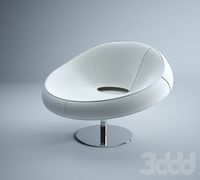
Moon
...moon
3ddd
moon armchair
3ddd
$1

MOON 012
...moon 012
3ddd
moon
moon 012
3ddd
$1

Moon 026
...moon 026
3ddd
moon
диван moon 026
design_connected
$13

Moon
...moon
designconnected
davide groppi moon computer generated 3d model. designed by groppi, davide.
3ddd
$1

Moroso moon
...moroso moon
3ddd
moroso , moon
кресло moroso moon
3ddd
$1

MOON 016
...moon 016
3ddd
moon , угловой
диван moon 016
3ddd
$1

MOON 053
...moon 053
3ddd
moon , угловой
диван moon 053
3d_ocean
$7
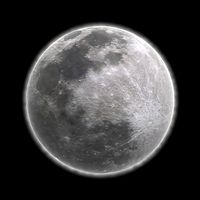
MOON
...rth jupiter model moon nasa nature ocean photorealistic planet poly realistic render satellite science solar space system
3d moon
3ddd
$1

Диван Moon
...диван moon
3ddd
moon , модульный
диван для гостиной. moon
Base
archibase_planet
free
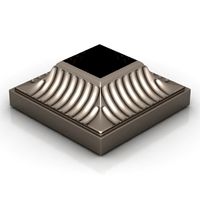
Base
...base
archibase planet
base column column base
base 1 - 3d model (*.gsm+*.3ds) for interior 3d visualization.
archibase_planet
free

Base
...base
archibase planet
base column base column
base 5 - 3d model (*.gsm+*.3ds) for interior 3d visualization.
archibase_planet
free
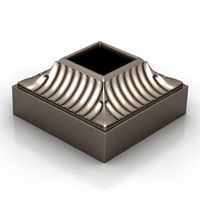
Base
...base
archibase planet
base column column base
base 7 - 3d model (*.gsm+*.3ds) for interior 3d visualization.
archibase_planet
free
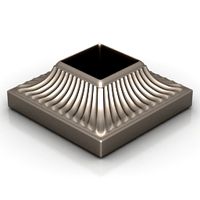
Base
...base
archibase planet
base column column base
base 2 - 3d model (*.gsm+*.3ds) for interior 3d visualization.
archibase_planet
free
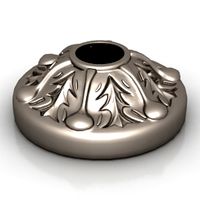
Base
...base
archibase planet
base column column base
base 3 - 3d model (*.gsm+*.3ds) for interior 3d visualization.
archibase_planet
free
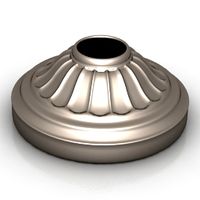
Base
...base
archibase planet
base column column base
base 4 - 3d model (*.gsm+*.3ds) for interior 3d visualization.
archibase_planet
free

Base
...base
archibase planet
base column base column
base 6 - 3d model (*.gsm+*.3ds) for interior 3d visualization.
archibase_planet
free
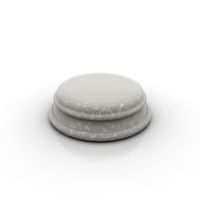
Base
...base
archibase planet
foundation base
column base ionic - 3d model (*.gsm+*.3ds) for interior 3d visualization.
archibase_planet
free
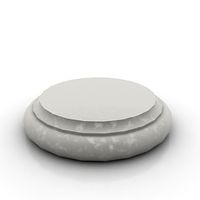
Base
...base
archibase planet
foundation base
column base tuscan - 3d model (*.gsm+*.3ds) for interior 3d visualization.
design_connected
$18

Base
...base
designconnected
tom dixon base computer generated 3d model. designed by dixon, tom.
